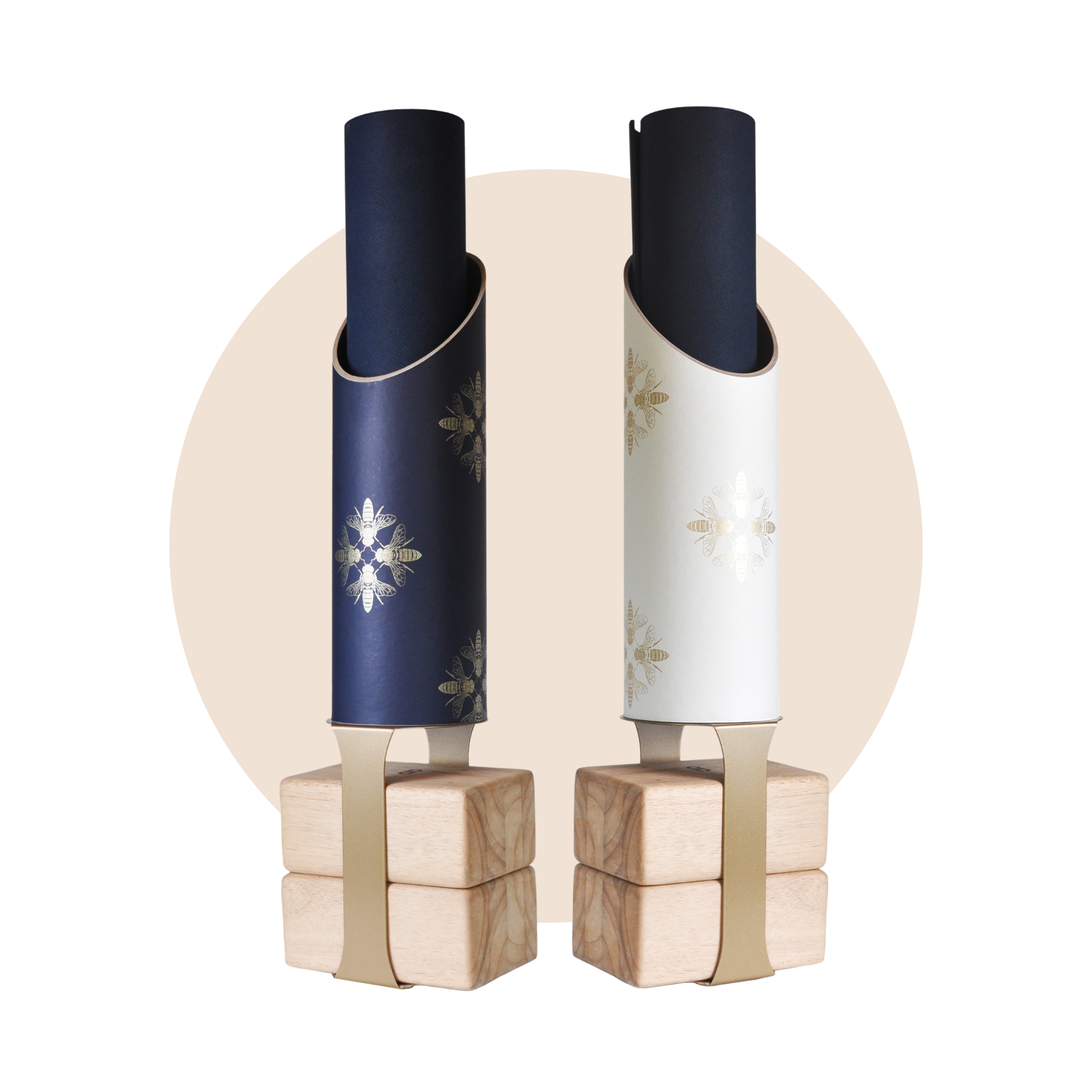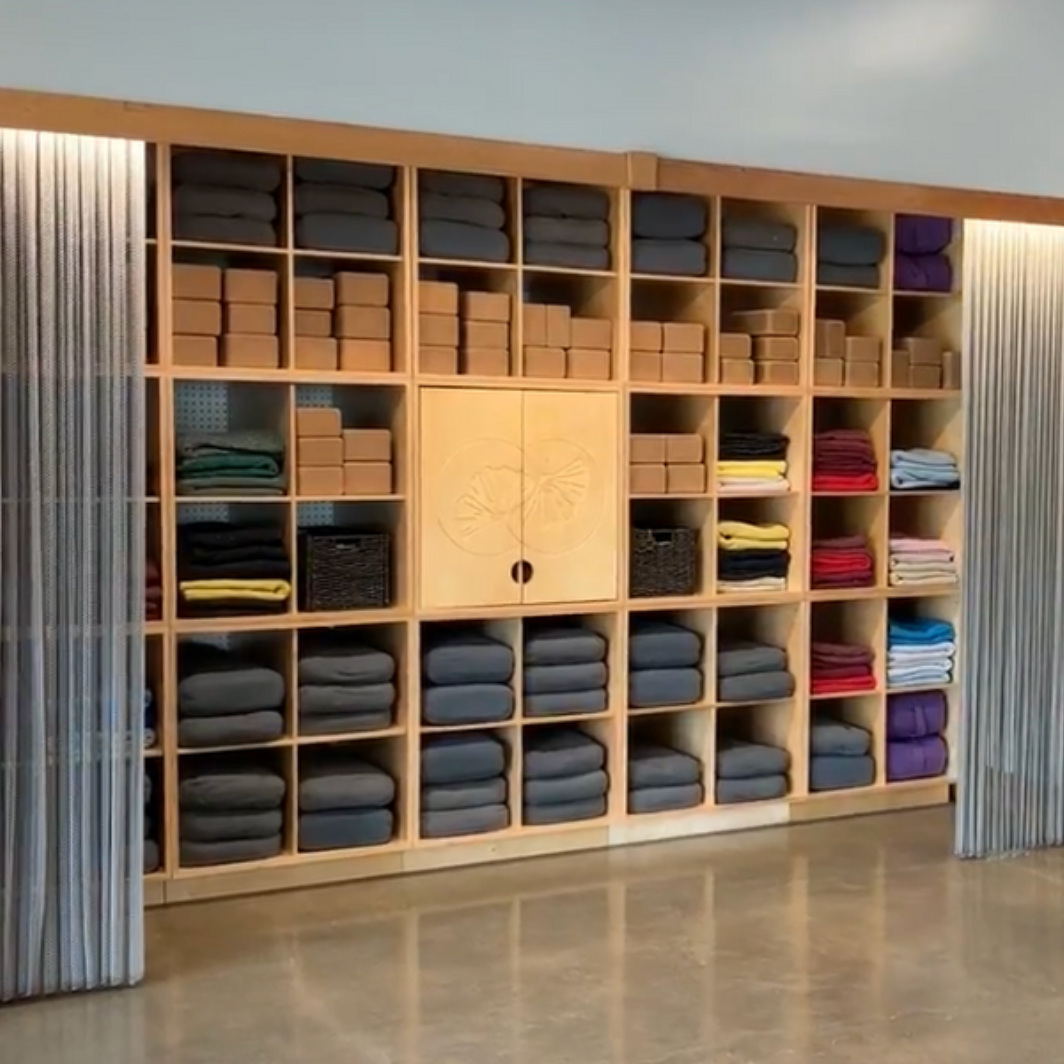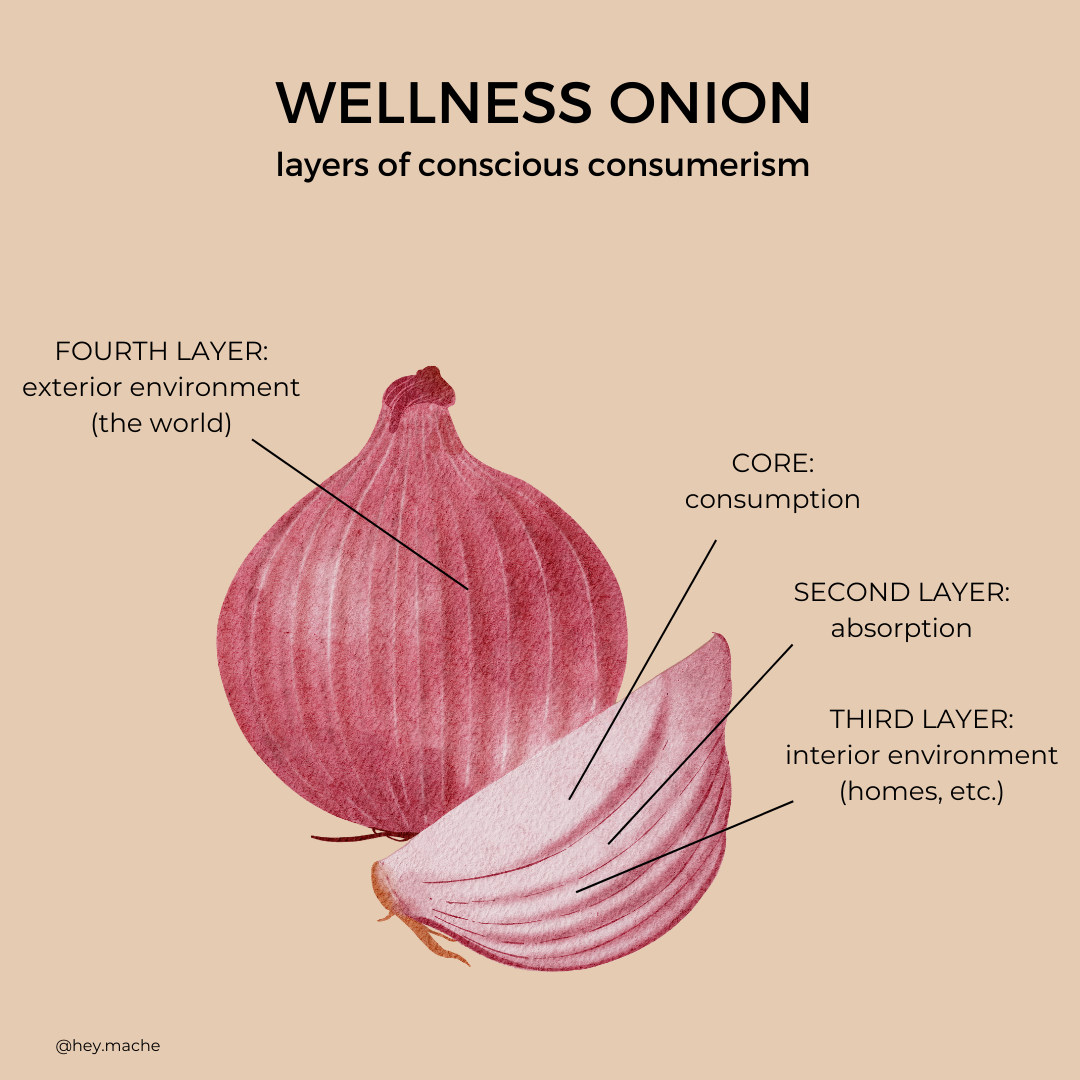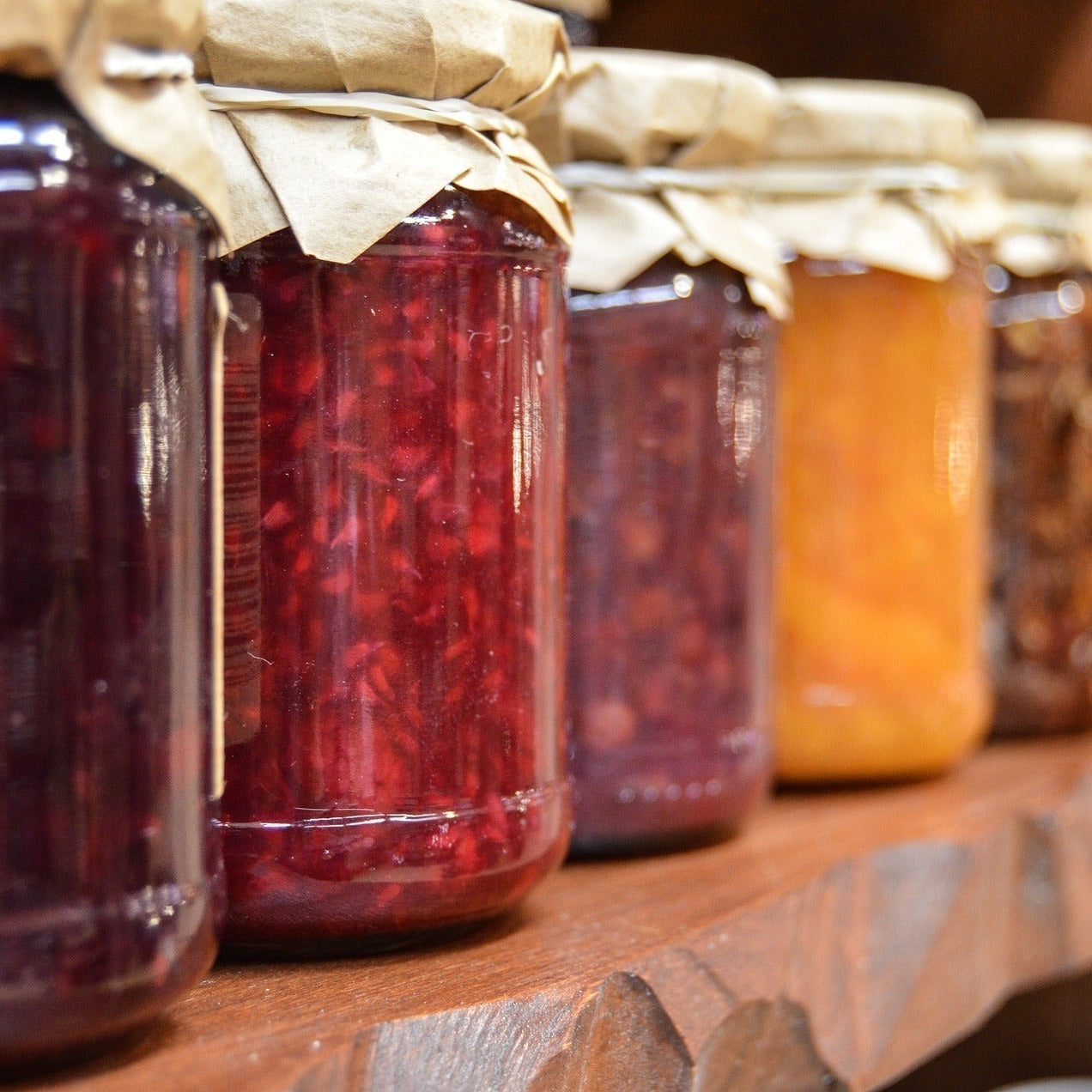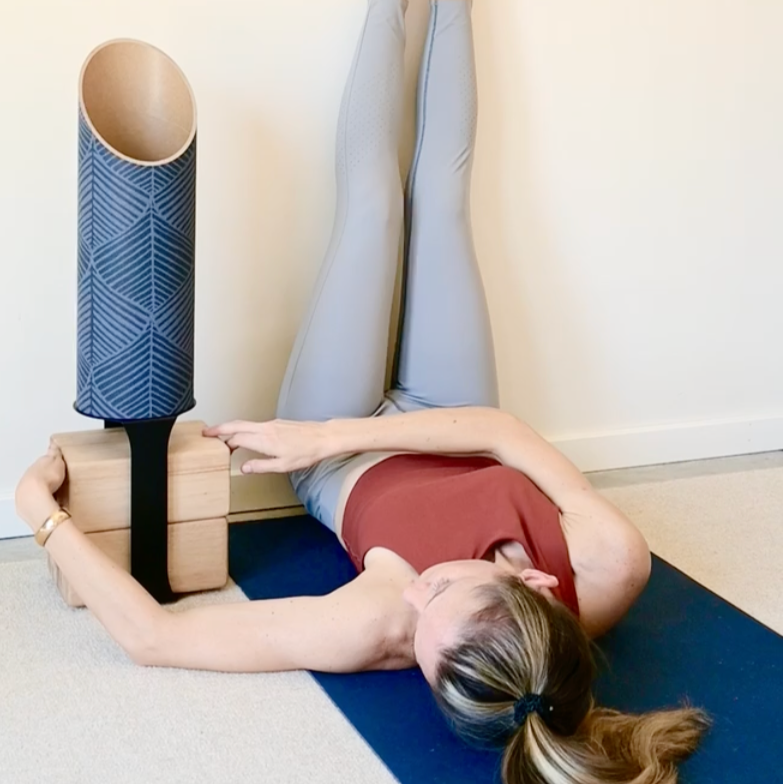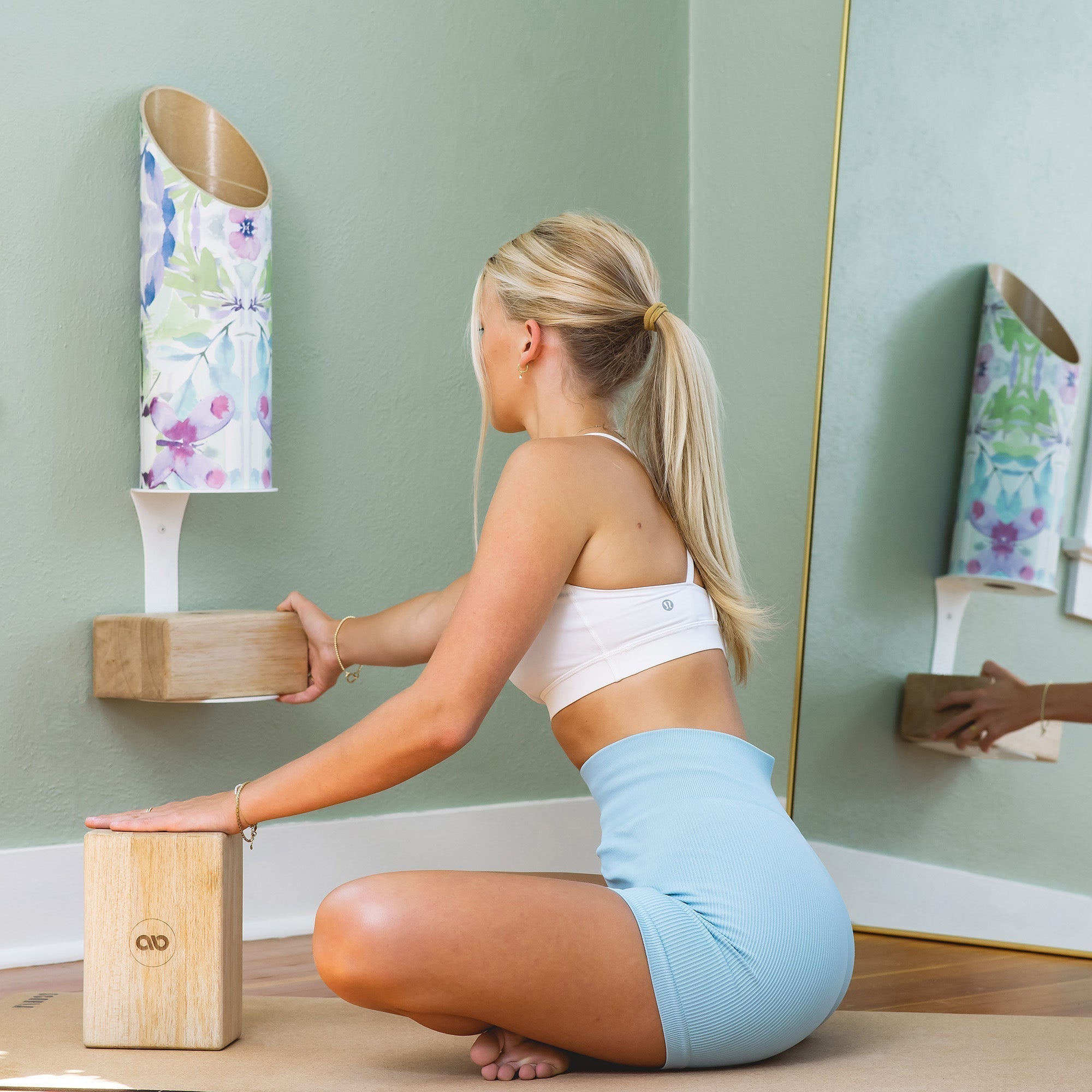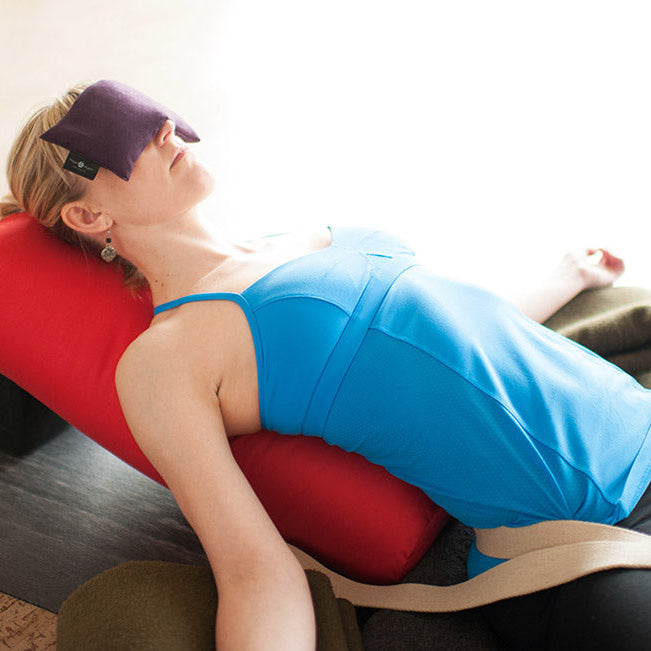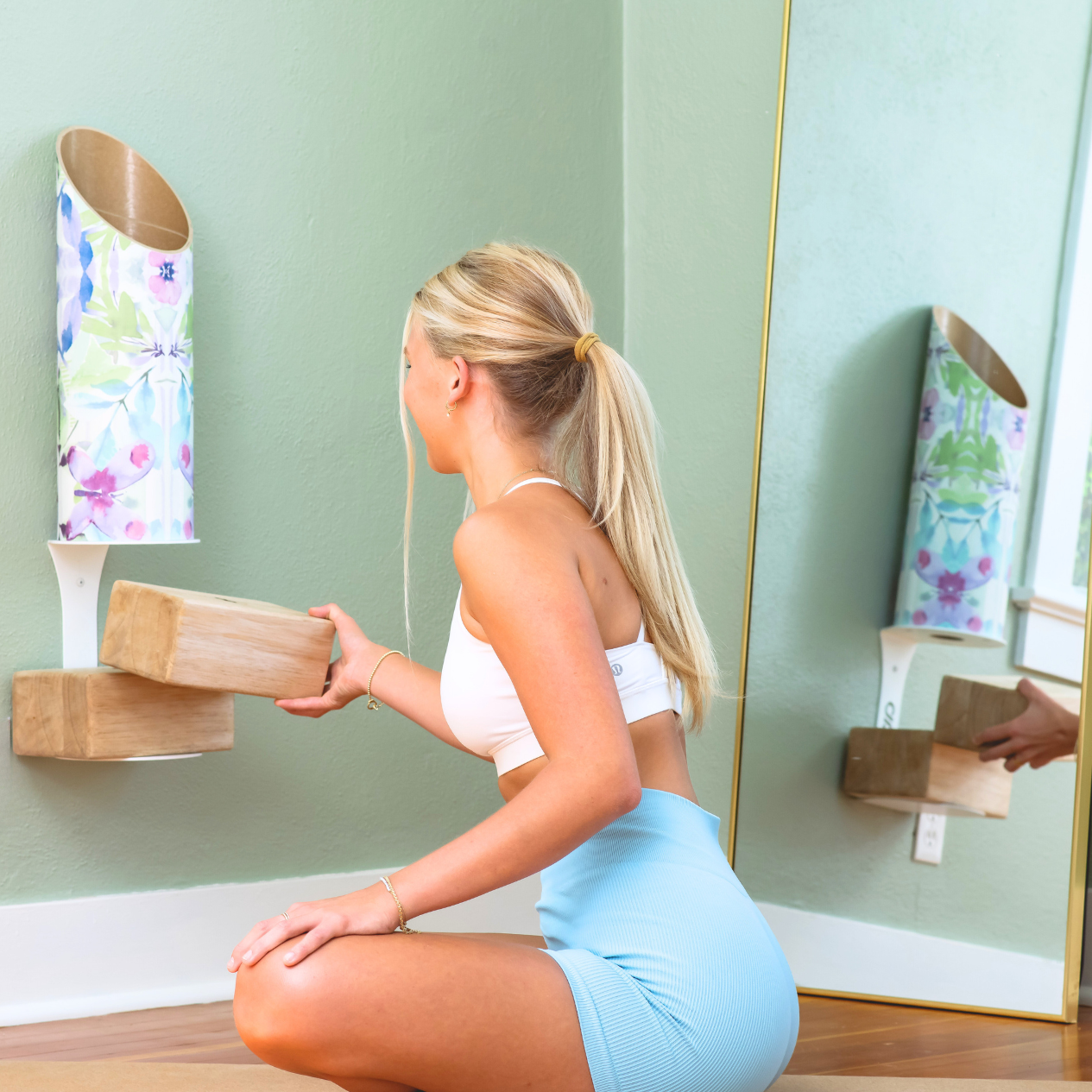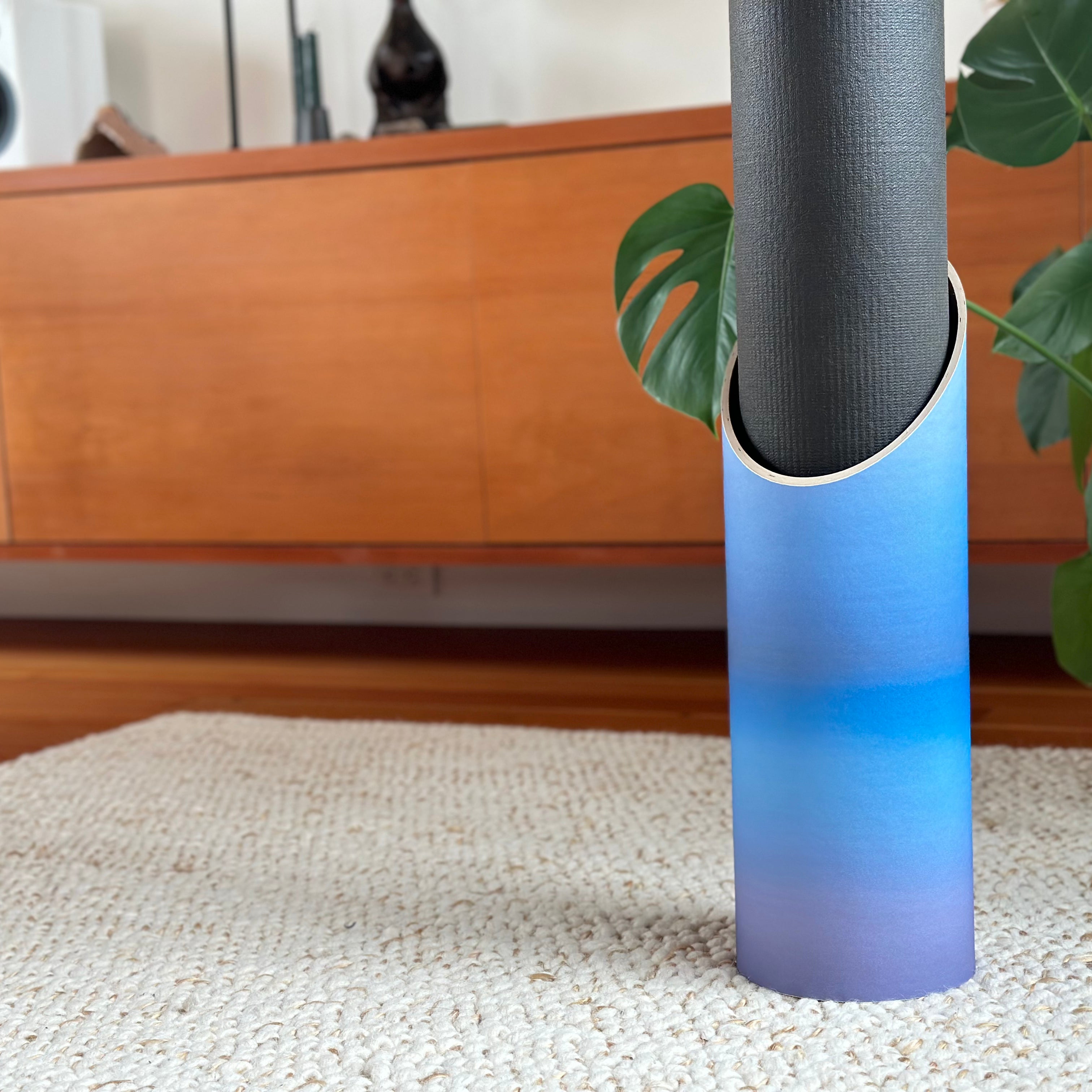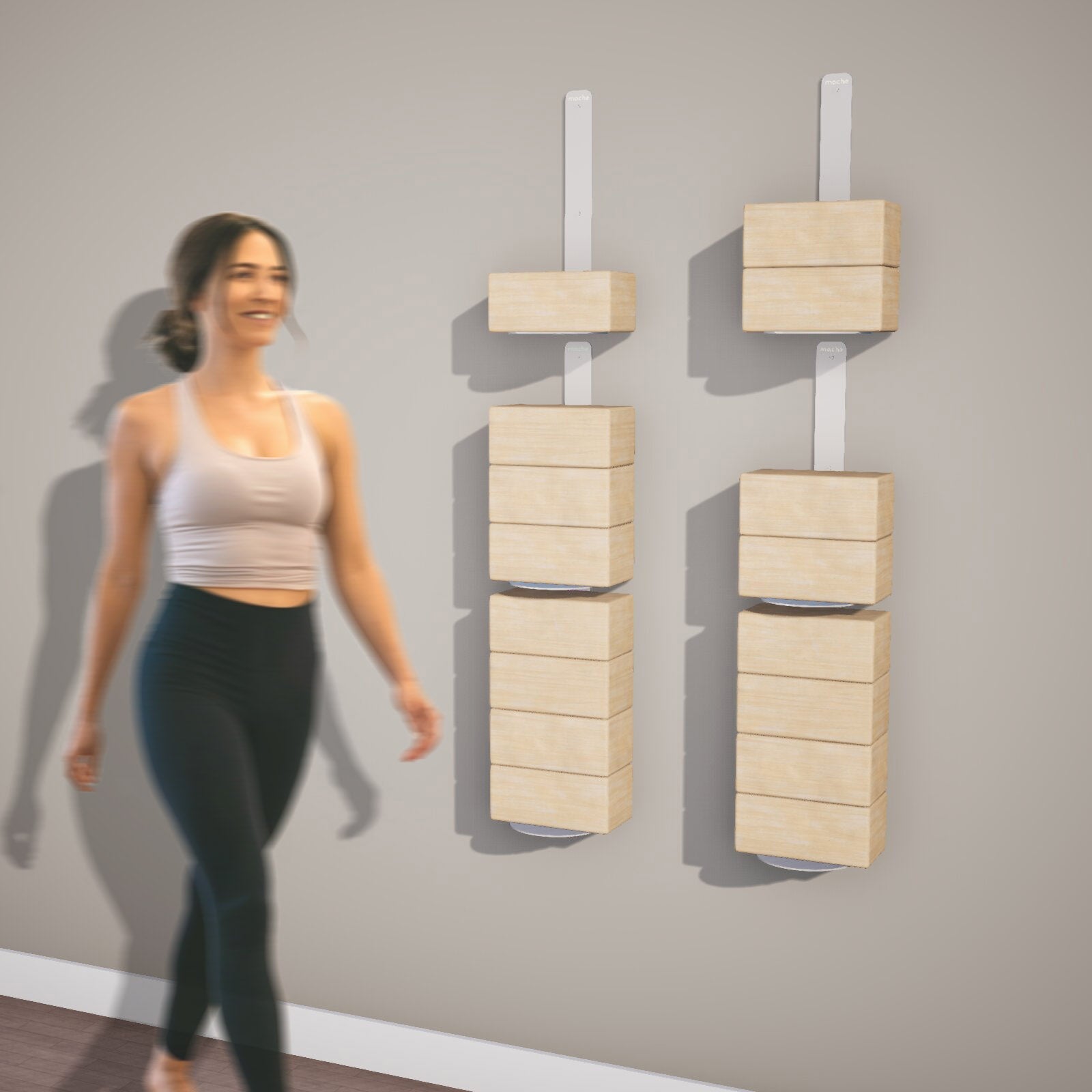Embedded in the culture and philosophy of yoga, is environmental sustainability and health. In the ancient teachings of yoga, the Yamas and Niyamas outline a set of ten ethical principles for yogis to live by. While these ethics don’t explicitly call out the need for environmental stewardship, is it easy to see how practicing Ahimsa (non-violence) and Aparigraha (non-possessiveness), for example, lend themselves well to living harmoniously with nature. In applying these ancient principles to modern lives, we must consider how much we consume, exactly what we are consuming, and what it means for the planet today as well as tomorrow.
At its core, yoga is about our health and wellbeing. There is certainly no denying the inextricable link between human health and environmental sustainability. What is better for our bodies and minds, is often better for the planet, too. So, what does this mean for our yoga mats and storage? Let’s take a deeper dive into current materials used in the construction of some of the industry’s leading yoga mats.
Most Common Materials in Yoga Mats Today
Polyvinyl chloride (PVC)
The majority of conventional yoga mats in the US are made of Polyvinyl Chloride, aka PVC. PVC is a petroleum-based material that requires the use of many toxic chemicals in its production to create the lightweight, flexible, and durable products, like yoga mats, that we consume and use on a daily basis. PVC is easily one of the most toxic materials for human and environmental health, from its production to its end of life. (Source)
In terms of human health, nearly all of the toxic chemicals used in the production of PVC, from plasticizers like phthalates, chemical foaming agents like azodicarbonamide (ADA), dangerous compounds like dioxin, and other chlorinated chemicals have been linked to reproductive issues, birth defects, hormone disruption, asthma, neurological damage, cancer, and much more. (Multiple sources)
In terms of environmental health, these toxic chemicals have been linked to ozone depletion, pollution of the air, soil, and our oceans, and to put it plainly: the degradation and extinction of wildlife and ecosystems. Additionally, plastics like PVC also cannot be recycled and will never fully break down, contributing to the landfill epidemic. (Source)
Polymer Environmental Resin (PER) or Thermoplastic Elastomer (TPE)
Many manufacturers use PER or TPE as a replacement for PVC, as a response to the increasingly mainstream knowledge about PVC and its toxicity. And while these substitutions might not be “as bad”, there is certainly nothing good about them.
PER, for example, is actually still PVC, but because it is phthalate-free, manufacturers often try to market it as a better option. Though missing toxic phthalates, PVC still requires the use of other toxic chemicals and plasticizers and no matter how manufacturers try to frame it, PVC will never be considered a sustainable, healthy or “eco-friendly” material, according to health and sustainability experts. (Source)
TPE is also heavily marketed to the yoga community as a sustainable option, but TPE is a completely synthetic material with no specific composition. It’s become a catch-all term for yoga mats made up of a mix of polymers. This means that a TPE yoga mat could be made from a variety of different materials, from rubber to plastic (usually a combination of the two), requiring a heating and chemical bonding process. Some studies have shown TPE yoga mats to contain nitrosamines and other chemicals linked to cancer (Source). Some companies are aware of this and have claimed to eliminate toxic chemistry, but any yoga mat made of synthetic material is sure to raise an eyebrow of a health expert or environmentalist and is worth inquiring about and/or studying further.
Rubber
Many yoga mats contain rubber and it is important to know whether it is natural rubber or synthetic rubber, as they are very different in terms of their health and environmental impacts.
Synthetic rubber is incredibly toxic as its principal ingredients are styrene and butadiene, which are both known carcinogens and neurotoxins (Source). Though rubber can be reused and made into new products, it is still a highly toxic material that will remain on the planet, in our oceans and landfills until the end of time.
Natural rubber comes from rubber trees. To create the rubber used in our yoga mats, folks cut into the bark of the tree to extract the fluid, and then manufacturers mix the fluid with chemical additives to harden the fluid (Source). Though chemical additives are rarely a good thing for our health, this is certainly a better alternative to PVC and PVC replacements like TPE.
Rubber trees do not require being cut down in this process, but it is good to keep in mind that anytime we rely too heavily on a natural source, it results in environmental degradation.

Cork
Cork yoga mats (and blocks) are made from the bark from cork oak trees. Cork Oak trees take about 25 years to grow to the level of maturity needed for optimal bark harvesting and can only be harvested every nine years. Cork Oak trees are considered to be a keystone species, contributing to the biodiversity and health of its ecosystem, so while they are not cut down or harmed in the process of cork harvesting, like rubber, it is still important that these precious trees are protected and not over-harvested.
To date, we cannot find any research that proves that they are over-harvested, sprayed with pesticides, or any other harmful chemicals. This is great news for our cork yoga mats; as long as they are not a hybrid yoga mat (cork plus another material), then it is safe to assume that they won’t require the use of glues, PVC or any other toxic ingredients and are 100% biodegradable.
Things to be Mindful of when Shopping for a New Yoga Mat
Hybrid/Combo Materials
Hybrid yoga mats are growing in popularity and while some material combinations are harmless (like many rubber and cork combo mats), seeing a hybrid or combination yoga mat can also be an indicator that there could be something unsustainable or unhealthy about it.
For example, rubber and PET (Polyethylene terephthalate) may not be terrible for our health, but there is no recycling option for this combination. In terms of health, one way to think about it is when you have to combine two or more materials to create a product, there is most often a chemical process that takes place to unite them.
When we look at health and sustainability, some of the most difficult considerations are the use of recycled materials like polyester or plastics. In regard to sustainability, it is better to have these materials repurposed/reused, but that doesn’t mean they are any better for our health. These decisions between health and environmental sustainability can be some of the most difficult, but if we want to play it safe, it is always best to look for materials that are 100% biodegradable, don’t require the use of glues and binding materials, and are sustainable in their production.
Do your research
Manufacturers will say just about anything to get you to believe that their product is better than their competitors, so do your research. Just because a yoga mat claims to be “eco-friendly” or “doesn’t contain toxic chemicals”, does not mean that it is true. Just like Cheetos are allowed to put the words “natural” on their packaging, companies that manufacture yoga mats can also say just about anything to sell their product.
When in doubt, email the manufacturer to inquire about a questionable ingredient. This is helpful for two reasons:
1.) You might get an answer!
2.) Your input helps to put pressure on material and product manufacturers to assess the increasing demand for healthier and more sustainable products.
Less is more & natural is better
Man-made and synthetic ingredients have proven themselves time and time again to be toxic for our health and planet. From the plastic in our oceans to the rubber tires building up in landfills, man-made products don’t actually have an “end of life”, they just sit around polluting our lungs and planet.
Just as we inspect the backs of shampoo bottles and food labels to find a list of 20+ ingredients (many of which we cannot even pronounce), the same goes for our yoga mats –the simpler, the more natural, and the less processed and synthetic, the better.
Reach for Yoga Mats that Support Health and Respect the Earth
As more information and research about the toxic materials and ingredients used in yoga mats becomes common knowledge, we are seeing a trend toward plant-based and natural ingredients like natural rubber, cotton, grass, jute, and even Fiber Particulate Composite (FPC™) made from agricultural waste. There are even yoga mats dyed with medicinal fruits and plants to eliminate the need for synthetic dyes…. Um, yes, please!
Living a more whole-hearted, minimalist, and healthy lifestyle often brings us back to our roots. The roots of traditional yoga and other ancient practices that teach us to slow down, to be more mindful, and live lives that are harmonious with the natural world. Fortunately, we see this happening with yoga mats, too. What started in the West as a PVC-dominated, factory-produced, and anything-but-sustainable yoga mat industry is starting to slow down and turn to hand-woven, ethically produced, plant-based and locally manufactured products.
Luckily, as consumers, we have the power to choose products that align with our healthy, whole-hearted and sustainable lifestyles. Thoughtful consumers partnering with eco-friendly manufacturers can turn the tide of current material use and manufacturing processes that are harmful to people and planet health, and move us towards safer and more sustainable planet-friendly product options.
Want to know more about the harmful chemicals you want to avoid in the yoga industry? Check out this article on the top 5 toxic plastics polluting your practice.

